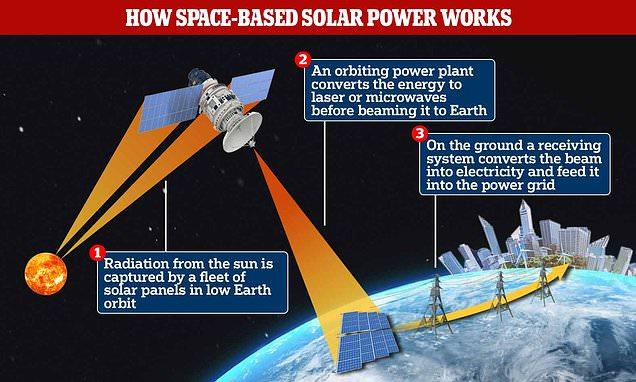In the vast, silent expanse of space, where sunlight streams unfiltered and unobstructed, China is poised to rewrite the future of energy production. A revolutionary concept is taking shape—a colossal solar station that stretches half a mile into the cosmic void, promising to harvest solar power with unprecedented efficiency and scale. As terrestrial energy challenges mount, this ambitious project represents more than a technological marvel; it’s a bold leap into a potential solution that could transform how humanity generates and consumes electricity. In a bold leap towards renewable energy innovation, China is set to revolutionize space-based power generation with an ambitious project that could transform how humanity harnesses solar energy. The proposed space solar station represents a technological marvel that pushes the boundaries of engineering and sustainable power production.
Imagine massive solar arrays stretching half a mile across the inky blackness of space, capturing unfiltered sunlight with unprecedented efficiency. Unlike terrestrial solar installations, these orbital platforms would eliminate atmospheric interference and the limitations of day-night cycles, providing continuous, uninterrupted energy collection.
The proposed design involves intricate photovoltaic panels that would convert solar radiation into electrical power, then transmit the energy back to Earth using advanced microwave transmission technology. Each array represents a complex engineering challenge, requiring precise alignment, lightweight materials, and robust communication systems to ensure reliable power transfer.
Scientists and engineers are developing specialized lightweight materials that can withstand the extreme conditions of space, including temperature fluctuations, radiation exposure, and mechanical stress. Cutting-edge solar cell technologies will maximize energy conversion rates, potentially generating multiple times more power than ground-based solar installations.
The economic and environmental implications are profound. Such a space-based power station could generate gigawatts of clean energy, substantially reducing global dependence on fossil fuels. The project represents more than a technological achievement; it symbolizes humanity’s potential to solve complex energy challenges through innovative thinking.
International space research communities are watching China’s progress with keen interest. The project could spark a new era of space-based energy infrastructure, potentially inspiring similar initiatives worldwide. Collaboration and knowledge sharing will be crucial in refining these groundbreaking technologies.
Challenges remain significant. Launching and maintaining such massive structures in space requires extraordinary technical expertise and substantial financial investment. Microwave transmission accuracy, structural integrity, and long-term operational sustainability are critical considerations that researchers must meticulously address.
The potential rewards, however, are extraordinary. A successful space solar station could mark a turning point in global energy production, offering a sustainable solution to increasing power demands while dramatically reducing carbon emissions. As technological capabilities expand, what once seemed like science fiction inches closer to reality.
China’s ambitious project represents more than an engineering feat; it embodies humanity’s relentless pursuit of innovation, pushing the boundaries of what’s possible in renewable energy generation and space exploration.

